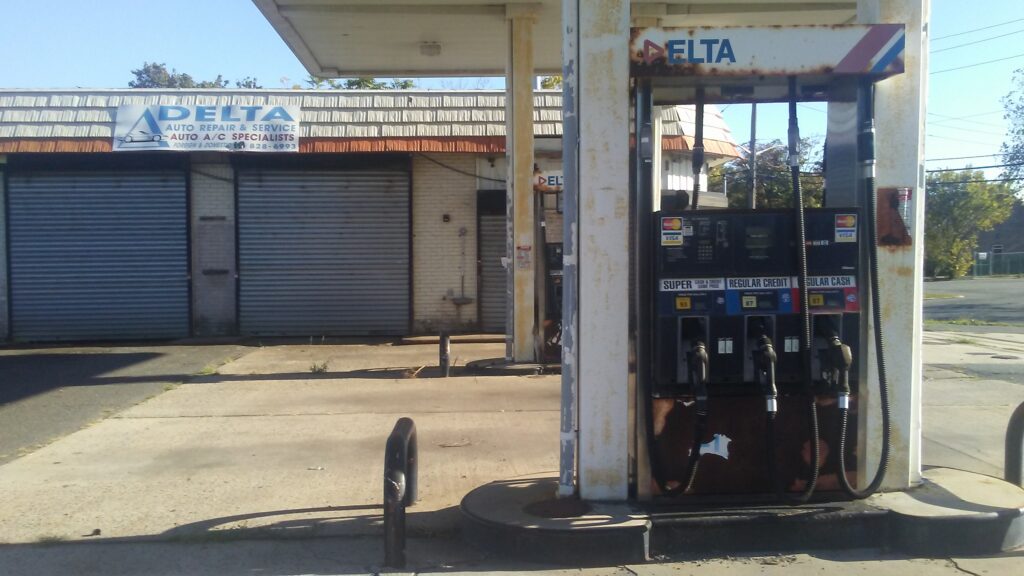The Legislature Attempts to Kickstart an Idea – with No Gas

In another example of a solution in search of a problem, legislation has re-emerged to permit New Jerseyans to pump their own gasoline.
If there has been a rising clamor from a public demanding the freedom to fill their tanks themselves, it’s eluded the Legislature, the Administration, bloggers and internet surfers.
For 73 years, pulling up to a gas pump and instructing a waiting attendant to “fill it up, regular” has been motorists’ routines while they wait comfortably in their vehicles out of the cold, heat, rain, snow or dark of night and free from the fear of dripping pungent, sinus-searing flammable liquid on their shoes, trousers or dresses. Not to mention their hands.
No one seems to have suffered intellectually, physically, emotionally or socially from the experience in the nearly three-quarters of a century of customer service.
The latest effort to end the prohibition on self service is the introduction of the “Motorist Fueling Choice and Convenience Act” and is an effort at compromise by permitting service stations to offer full service, self-service or a mix of both. A full service option would be required of stations with more than four pumps between 8 a.m. and 8 p.m.
The majority of New Jerseyans have grown to adulthood without ever knowing anything other than station service and seem perfectly content with it.
They clearly make up the nearly 70 percent of those who expressed support in a recent poll to retain the self-serve ban.
The lack of any compelling groundswell of support to change it is a case of “If it ain’t broke, don’t fix it.”
Even governors recognize the political third rail involved. Former Gov. Chris Christie said of self-serve, “it’s never gonna happen” and three years ago, Gov. Phil Murphy politely declined an invitation to “commit political suicide” by taking on the issue.
As in the previous sporadic efforts to end the self-serve prohibition, the industry has placed it in the context of a price decline, although estimates vary and there is little empirical evidence available to support it.
For instance, at an average of $3.65 per gallon, New Jersey is less expensive than 12 other states — including neighboring New York and Pennsylvania — and the District of Columbia, all of which provide self service.
The nine states immediately behind New Jersey’s price average differ by a modest one to three cents per gallon while those ahead exceed the state by between six cents and $1.19 per gallon — the highest is California at an astounding $4.84 per gallon.
The data indicate that the correlation between self service and lower cost is not as direct or significant as supporters suggest it is.
The industry contention of price reductions has been met with skepticism from the public over whether costs will actually fall, by how much and for how long before market forces, the law of supply and demand or production disruptions drives them to pre self service levels.
Most believe that any lower cost will result from workforce cutbacks — if customers serve themselves, there’s no need to retain an employee or two on the payroll — and that any savings, rather than passed on to customers, will bolster the station ownership’s bottom line.
If, for instance, assuming the prediction of a 15 cents per gallon decline, a customer would save $1.50 on the purchase of 10 gallons of gas — a fairly nominal sum worth paying in return for remaining in a car and out of the elements while an attendant provides service.
In the most recent effort, industry advocates contend that a labor shortage driven by the effects of the pandemic has forced stations to close down service lanes, hindering business and cutting into profits. The labor shortage, though, has fallen with significant impact across all sectors of the economy from truck drivers to health care workers to the hospitality industry to public school teachers.
Adapting to it while government works toward a national recovery and an easing of the worker shortage is still the preferred option.
Supporters hope the hybrid approach they’ve recommended — self serve as well as full serve — will appeal to legislators concerned about an adverse public reaction and convince them the risk has been minimized.
They may well turn out to be correct in their optimistic assumption even though opponents will argue that self-serve, once instituted, will grow and expand over time with little opposition until full serve becomes a thing of the past.
The prohibition was put in place four years after the end of World War II and has survived periodic efforts to dispense with it until New Jersey became the last state standing.
The fact is that people are accustomed to it, do not find it onerous and — most importantly — they like it.
It may be quirky and eccentric, but it is uniquely New Jersey, like going to LBI in the summer, sticking by the hapless New York Jets, putting up with traffic circles and bragging about the quality of pizza and pork roll.
To out everlasting chagrin, we’ve been first in the nation in property taxes; why shouldn’t we take pride in being first in the nation in customer service at our gas stations?
Carl Golden is a senior contributing analyst with the William J. Hughes Center for Public Policy at Stockton University.








Leave a Reply